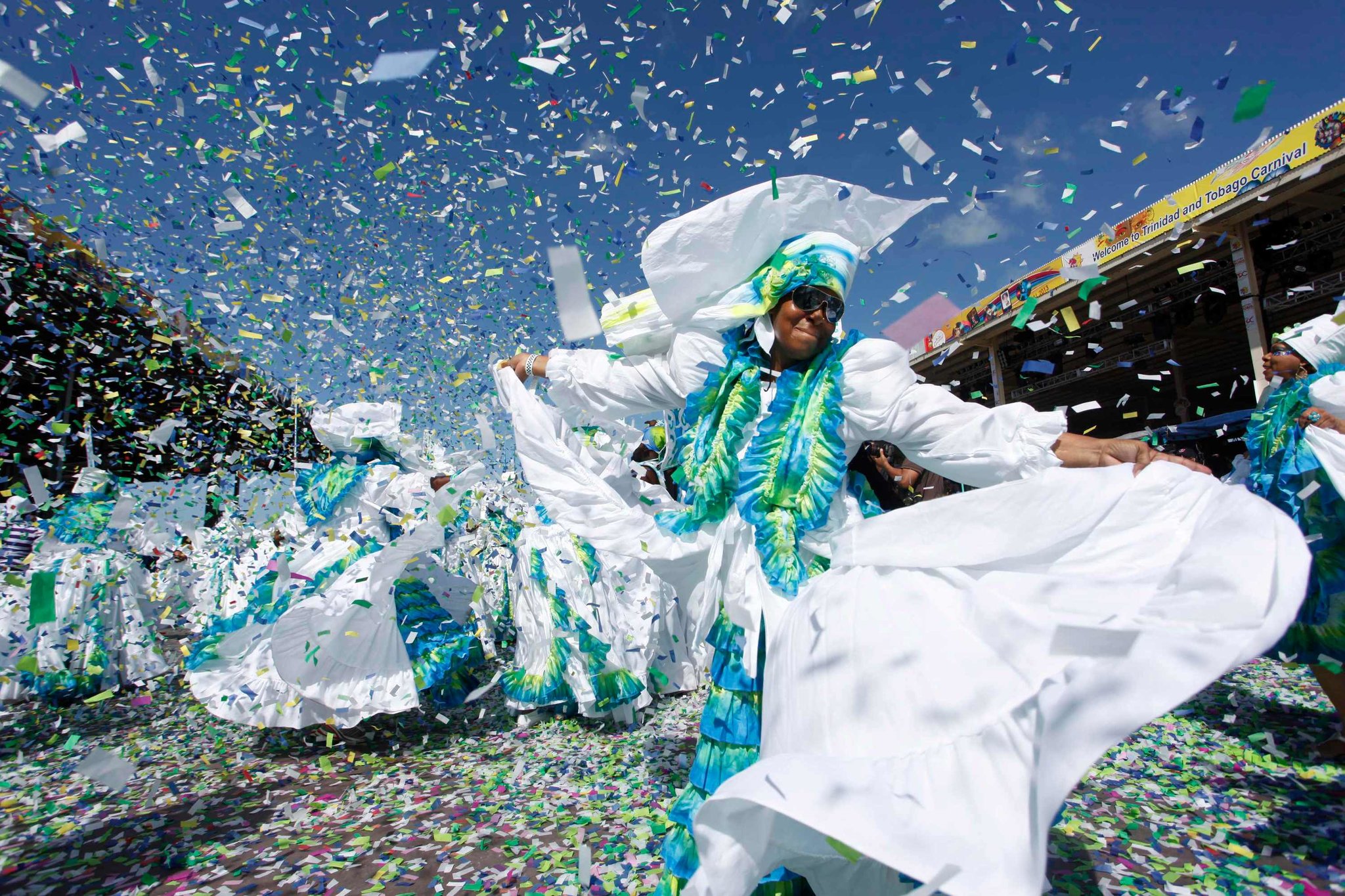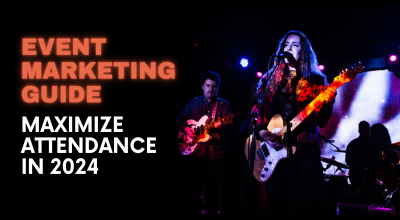We Caribbean carnival devotees, counting down the days until the region’s biggest bacchanal erupts on the streets of Port of Spain, Trinidad, on Feb. 27 and 28, have a dream. A dream that one day carnival will grace us with its life-affirming presence not once a year but once a month. That one day all of humanity can pause during mundane daily routines and take solace in the fact that right now, somewhere in the world, life is being measured out in music and dance and feathers and glitter, not conference calls and crowded commutes: Somewhere, it is carnival.
That dream may be turning into reality.
Throughout 2016, tens of thousands of revelers flocked to over a dozen destinations to partake in carnival celebrations. From Jamaica to Los Angeles, London to Bermuda, Cayman to Toronto, they indulged in costumed parades, extravagant fetes and frenetic soca concerts, and were living proof that Caribbean carnival culture is growing globally, thanks, largely, to one island: Trinidad.
“Carnival to Trinidadians is like soccer to Brazilians,” said Wayne Henry, a founder of ValeVibe, a 23-year-old Trinidadian events company. “In the past, we’ve tended to keep our culture to ourselves, but now Trinis have gained the confidence to export something we certainly do well: party and have a good time.”

This exportation — call it the Trini-fication of carnival — has become the antidote to what Trinidadians call tabanca: heart-wrenching post-carnival pain fueled by the knowledge that the next bacchanal is a whole year away. Now there’s a calendar that starts in Trinidad during the traditional pre-Lent celebration and concludes in October at Miami Carnival, with global and regional carnivals scheduled almost monthly in between. It’s a movement documented by booming media entities — like the fastidious TriniJungleJuice.com, a global carnivalgoer’s bible — and piloted by young Caribbean entrepreneurs who take having a good time very, very seriously.
Trinidad-style carnival fetes, after all, are not mere parties but full-on productions, transforming the days surrounding the parade into an unofficial competition: Which modish fete will not only eclipse the more traditional elements of carnival — the parade, the calypso contests, the competition for carnival king and queen — but outdo others in terms of venue, food, D.J. lineup and musical guests? Think of a raucous dance party against a backdrop of flamingos in Miami; amid the roller coasters of Coney Island in New York; on a boat down the Thames in London; deep in the sugar cane fields of Barbados.
“If I can give a party in a volcano before it erupts, I’ll do it,” said Jules Sobion, the chief executive of a Trinidad events company called Caesar’s Army. Having attended his signature event, A .M. Bush, on three islands, I believe him. Annually thousands of revelers — including, last year, Rihanna, who partied with Caesar’s Army on her home island, Barbados — scramble for tickets to line up at 3 a.m., follow music and drinks trucks through fields, cover themselves in paint and hose themselves down as the sun comes up. The dancing persists till noon.
“We do the unexpected,” Mr. Sobion explained. “What does Caesar’s Army do? We export fun.”
The result is more than fun — it’s a financial boon.

Carnivalgoers are a niche market that’s growing and will continue to grow,” said Roscoe Dames, the chief executive and managing commissioner of the Bahamas National Festival Commission. Four years ago his team was given a government mandate to create a carnival as part of an effort to lure tourists and stimulate the creative sector. The result, started in 2015 in Nassau and Grand Bahama Island, was Bahamas Junkanoo Carnival, which fuses the country’s carnival traditions (known as Junkanoo) with a contemporary festival. The Bahamas, like many islands, wanted to maintain its own inimitable flavor while importing Trini styles.
“The bedrock of the festival is our local music and culture,” Mr. Dames said, “but we looked at presenting the full spectrum of the Caribbean: Cuban bands, reggae, soca, Haitian zouk, as well as local rake-and-scrape and goombay music.” Last year, he added, it attracted upward of 60,000 participants and established itself “as a major player in the Carnival market.”
Other destinations — Jamaica, Grand Cayman, Grenada, Washington, D.C. — have long staged carnivals outside the traditional pre-Lent time frame, but are seeing their festivities flourish as Trinidadian brands move in and bring avid fans with them. Among the biggest draws to any carnival is a party presented by Scorch, a Trinidad entertainment company that includes a media and publishing arm, a local TV show and a music production house. Its raucous parties — held in places like London, Toronto, Barbados and, this year, Dubai — are the ones many desperately try to get into but few can fully remember the next day (there is no hangover like a Scorch hangover, many a carnivalgoer has avowed).
“Scorch is really a regional thing, meant to connect all the islands’ cultures,” said its chief executive, Kwesi Hopkinson. “So when we arrive at a particular carnival, it’s an endorsement, a seal of approval that, ‘Yes, this carnival is officially happening.’”

A swirl of parade participants at carnival in Port of Spain, Trinidad, in February 2013. Credit Andrea De Silva/Reuters
We Caribbean carnival devotees, counting down the days until the region’s biggest bacchanal erupts on the streets of Port of Spain, Trinidad, on Feb. 27 and 28, have a dream. A dream that one day carnival will grace us with its life-affirming presence not once a year but once a month. That one day all of humanity can pause during mundane daily routines and take solace in the fact that right now, somewhere in the world, life is being measured out in music and dance and feathers and glitter, not conference calls and crowded commutes: Somewhere, it is carnival.
That dream may be turning into reality.
Throughout 2016, tens of thousands of revelers flocked to over a dozen destinations to partake in carnival celebrations. From Jamaica to Los Angeles, London to Bermuda, Cayman to Toronto, they indulged in costumed parades, extravagant fetes and frenetic soca concerts, and were living proof that Caribbean carnival culture is growing globally, thanks, largely, to one island: Trinidad.
“Carnival to Trinidadians is like soccer to Brazilians,” said Wayne Henry, a founder of ValeVibe, a 23-year-old Trinidadian events company. “In the past, we’ve tended to keep our culture to ourselves, but now Trinis have gained the confidence to export something we certainly do well: party and have a good time.”
A marcher maneuvers an enormous construction. Credit Andrea De Silva/Reuters
This exportation — call it the Trini-fication of carnival — has become the antidote to what Trinidadians call tabanca: heart-wrenching post-carnival pain fueled by the knowledge that the next bacchanal is a whole year away. Now there’s a calendar that starts in Trinidad during the traditional pre-Lent celebration and concludes in October at Miami Carnival, with global and regional carnivals scheduled almost monthly in between. It’s a movement documented by booming media entities — like the fastidious TriniJungleJuice.com, a global carnivalgoer’s bible — and piloted by young Caribbean entrepreneurs who take having a good time very, very seriously.
Trinidad-style carnival fetes, after all, are not mere parties but full-on productions, transforming the days surrounding the parade into an unofficial competition: Which modish fete will not only eclipse the more traditional elements of carnival — the parade, the calypso contests, the competition for carnival king and queen — but outdo others in terms of venue, food, D.J. lineup and musical guests? Think of a raucous dance party against a backdrop of flamingos in Miami; amid the roller coasters of Coney Island in New York; on a boat down the Thames in London; deep in the sugar cane fields of Barbados.
“If I can give a party in a volcano before it erupts, I’ll do it,” said Jules Sobion, the chief executive of a Trinidad events company called Caesar’s Army. Having attended his signature event, A .M. Bush, on three islands, I believe him. Annually thousands of revelers — including, last year, Rihanna, who partied with Caesar’s Army on her home island, Barbados — scramble for tickets to line up at 3 a.m., follow music and drinks trucks through fields, cover themselves in paint and hose themselves down as the sun comes up. The dancing persists till noon.
“We do the unexpected,” Mr. Sobion explained. “What does Caesar’s Army do? We export fun.”
The result is more than fun — it’s a financial boon.
Wendy Fitzwilliam, who was Miss Universe in 1998, in a feathered costume for carnival in Port of Spain, Trinidad, in February 2013. Credit Andrea De Silva/Reuters
“Carnivalgoers are a niche market that’s growing and will continue to grow,” said Roscoe Dames, the chief executive and managing commissioner of the Bahamas National Festival Commission. Four years ago his team was given a government mandate to create a carnival as part of an effort to lure tourists and stimulate the creative sector. The result, started in 2015 in Nassau and Grand Bahama Island, was Bahamas Junkanoo Carnival, which fuses the country’s carnival traditions (known as Junkanoo) with a contemporary festival. The Bahamas, like many islands, wanted to maintain its own inimitable flavor while importing Trini styles.
“The bedrock of the festival is our local music and culture,” Mr. Dames said, “but we looked at presenting the full spectrum of the Caribbean: Cuban bands, reggae, soca, Haitian zouk, as well as local rake-and-scrape and goombay music.” Last year, he added, it attracted upward of 60,000 participants and established itself “as a major player in the Carnival market.”
Other destinations — Jamaica, Grand Cayman, Grenada, Washington, D.C. — have long staged carnivals outside the traditional pre-Lent time frame, but are seeing their festivities flourish as Trinidadian brands move in and bring avid fans with them. Among the biggest draws to any carnival is a party presented by Scorch, a Trinidad entertainment company that includes a media and publishing arm, a local TV show and a music production house. Its raucous parties — held in places like London, Toronto, Barbados and, this year, Dubai — are the ones many desperately try to get into but few can fully remember the next day (there is no hangover like a Scorch hangover, many a carnivalgoer has avowed).
“Scorch is really a regional thing, meant to connect all the islands’ cultures,” said its chief executive, Kwesi Hopkinson. “So when we arrive at a particular carnival, it’s an endorsement, a seal of approval that, ‘Yes, this carnival is officially happening.’”

Feathers, glitter and elaborate headdresses are part of the scene. Credit Andrea De Silva/Reuters
Not all islands are eager for that Trinidadian seal, though. When Bermuda started a carnival in 2015 on its Bermuda Heroes Weekend, it barred promoters from other islands.
“When the Trini promoters come into any jurisdiction, the local promoters lose out,” explained Jason Sukdeo, the president of BHW Ltd., the carnival’s corporate entity on the island. “I want Bermuda carnival to be for Bermuda, to make money for Bermuda. For us to set up a carnival and watch money go overseas is not what we want.”
But Jeremy Nicholls, a Barbadian promoter who runs some of the most popular events at Barbados Crop Over, that island’s carnival, which is the region’s second biggest, disagreed.
“Trinidadians coming here bring people with them,” he said. “They have a wider reach, and this has a ripple effect; these visitors will go to the big Bajan parties, too. So at the end of the day, it’s about us coming together.” His company, Roast, exports its brand to five other carnivals, he said.
For other enterprising Trinidadians, concerns are cultural, not financial: Will the dissemination of its carnival water down its profound history in the region, a history that stretches back to the 18th century, as European colonizers feted Lent with masked balls and their slaves followed suit, incorporating West African traditions into the revelry?
“What I definitely don’t want to see, with Trinis carrying our culture throughout the region, is the homogenization of carnival,” said Anya Ayoung-Chee, a designer who is a onetime Miss Trinidad and Tobago and the 2011 winner of Bravo’s “Project Runway.” Ms. Ayoung-Chee’s online Canyaval shop sells all things modish; her company also stages parties and has its own costume section in the parades of six carnivals.
“My focus is always, how do we think about it beyond copy-and-paste, from island to island?” she said. “How do we preserve traditions, but also how can we hybridize, recognizing that carnival culture is always evolving?”
To that end, the kickoff event she staged at the Afropunk Festival in Atlanta last October was inspired by J’Ouvert, the sunrise carnival ritual populated by folkloric characters such as stilt walkers and jab-jabs, or devils.
“I fused J’Ouvert traditions with New Orleans big bands and other cultural elements that have been influenced by the essence of carnival, all coming from the same history: Brazil, New Orleans, and so on,” Ms. Ayoung-Chee said. The idea is to showcase how the history of carnival manifests itself way outside of the Caribbean context.
“And that’s what’s exciting to me about exporting Trinidadian culture globally,” she added. “Not just representing the Caribbean but experimenting with our evolution, with what we could be on a global stage.”
Source : nytimes.com





.png)
.jpg)
